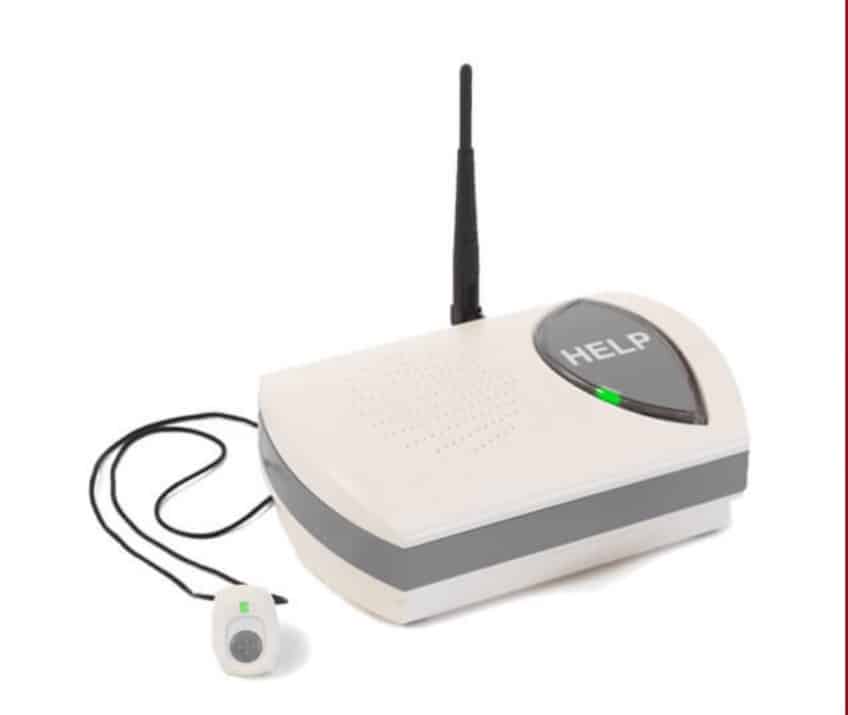Medical alert systems are also referred to as personal emergency response systems. They provide an easy and fast way for senior citizens with health problems or people who live on their own to alert “help” in case of an emergency. The emergency could be a medical matter, a fire, a fall, or any kind of emergency that needs a fast response. In essence, these kinds of systems have a help button that lets an emergency response center aware of your circumstance through linking you with a live agent.
The most basic systems make use of a landline and have a base unit and a movable help button you can put around your home and on yourself. Other types of medical alert systems like GPS-based mobile solutions are designed for people who are on the go. And some are built to send automatic alerts when triggered. Some go as far as to remind you through a phone call to drink your medications. If you want more information about the best medical alert system available read on to learn more.
What equipment is needed for medical alert systems?
The most standard medical alert systems utilize a landline telephone connection and contain a base unit and movable help button. Installing them is very easy. All you have to do is connect the unit to your phone’s jack using the phone’s cord. Once done, plug your phone into the second port on the unit. Insert the power cord and wait a while for the system to start up. Once the LED indicator changes to green, it’s ready to use. A good idea is to run a pilot test through the help button on the base unit to ensure everything is in working order.
When you are linked to a live agent, all you have to do is tell her/him that you are running a test. On their side, they will make sure everything is fine and verify your name.
To give you a visual clue the base unit almost looks like a speakerphone and does two jobs in one function. Its main job is to link you to a live emergency response agent without picking up a phone. This function is properly marked as an emergency or help button. Usually marked in a red.
In addition, it comes with a built-in speaker and a microphone that’s embedded with a microphone with a two-way hands-free communication ability. It also comes with an LED status indicator and also a button with several other functions.
Systems are built differently. Pressing the reset button on some systems will delete the call to a response center. Other systems will cancel the sound of the alarm but won’t cut the call. Meaning you’ll have to talk to an agent to inform them if everything is okay.
It could also be used by emergency responders to inform the response office that help is on the way or that help has arrived. Just ensure your base unit comes with a built-in battery backup to allow it to function even when theirs a power outage.
In addition, the movable help button can be placed on your body as a necklace or worn on your wrist like a bracelet or watch. It’s designed to be used inside and outside your home. So if you are in your backyard or inside your house you can get assistance by pressing a pendant to start a call to get help from the response center.
If for some reason you are unable to get close to the base unit and are unable to respond to the agent, the live agent will attempt to call people listed on your contact list before phoning the police
Portable help buttons are usually waterproof, if you prefer you can wear them as you shower. They’re able to transmit communication with the base unit at a distance of around 1500 feet.
Another good idea is to give your help pendant a trial by pressing the help button from different locations in your property and backyard, so you can be mindful of the type of range you can anticipate.
A fall-detection pendant does all the things a normal help button does. It also has sensors that are built-in that can know if you’ve fallen. This type of fall detection can automatically alert a response center. But to add this feature you’ll need to add a monthly fee.
Mobile vs home medical alert systems
In-home systems are perfect for people who hardly leave their house, but that said if you lead an active lifestyle rather go for a mobile medical alert system. These kinds of alert systems can go with you where ever you go. This is because they use GPS technology to identify your actual location and cellular technology to link you to a response center.
Mobile models are often larger and heavier compared to a basic portable help button, yet are still compact enough to be put on your body comfortably as a necklace. They also have a help button that starts a call to the response center and a microphone and speaker with two-way communication.
In addition, mobile pendants are fuelled by batteries that are rechargeable which can be ordered with a full detection sensor.
But if you don’t have a landline or just don’t want to make use of it for your medical alert system, you can buy a base unit that has built-in cellular circuitry. However, subscriptions for these systems usually charge more than landline systems. There’s no need for you to subscribe to a cellular provider because the cost is integrated into your subscription which is taken care of by the medical alert service supplier.
Just like landline systems, cellular systems are simple to install, all you need to do is plug them in, and wait for the LED light to turn green, then pilot the system as mentioned previously.
Today many medical alert systems are in existence. You can plug some in your car and get one-touch access to a live agent who will attend to your matter. Others have GPS and crash detection so that responders can know your location without you having to tell them where you are exactly. Just to be on the safe side





